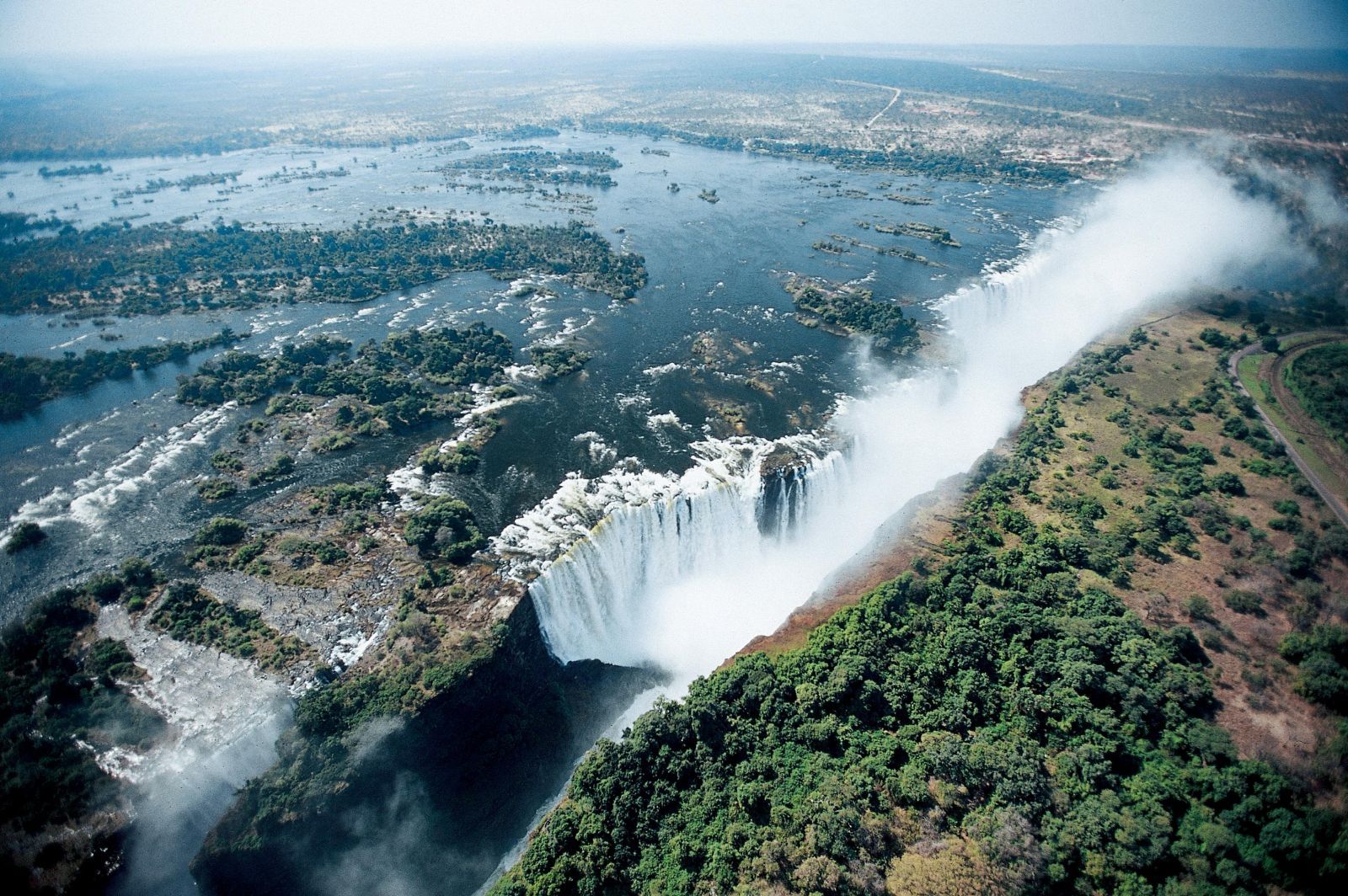It’s hard to deny that amazing waterfalls are some of the most fascinating natural wonders on the planet. It’s an extremely humbling experience to stand in the vicinity of such a powerful force. Very few waterfalls radiate this feeling better than this magnificent natural wonder in the southern part of Africa. In this article, you’ll discover some of the most interesting facts about Victoria Falls, one of the largest of its kind in the world.
There are two small islands at the edge of the First Gorge. These are large enough to divide the waterfall into different sections at low water. Boaruka Island or “Cataract Island” is located in the utmost western part of the waterfall and Livingstone Island in the middle.
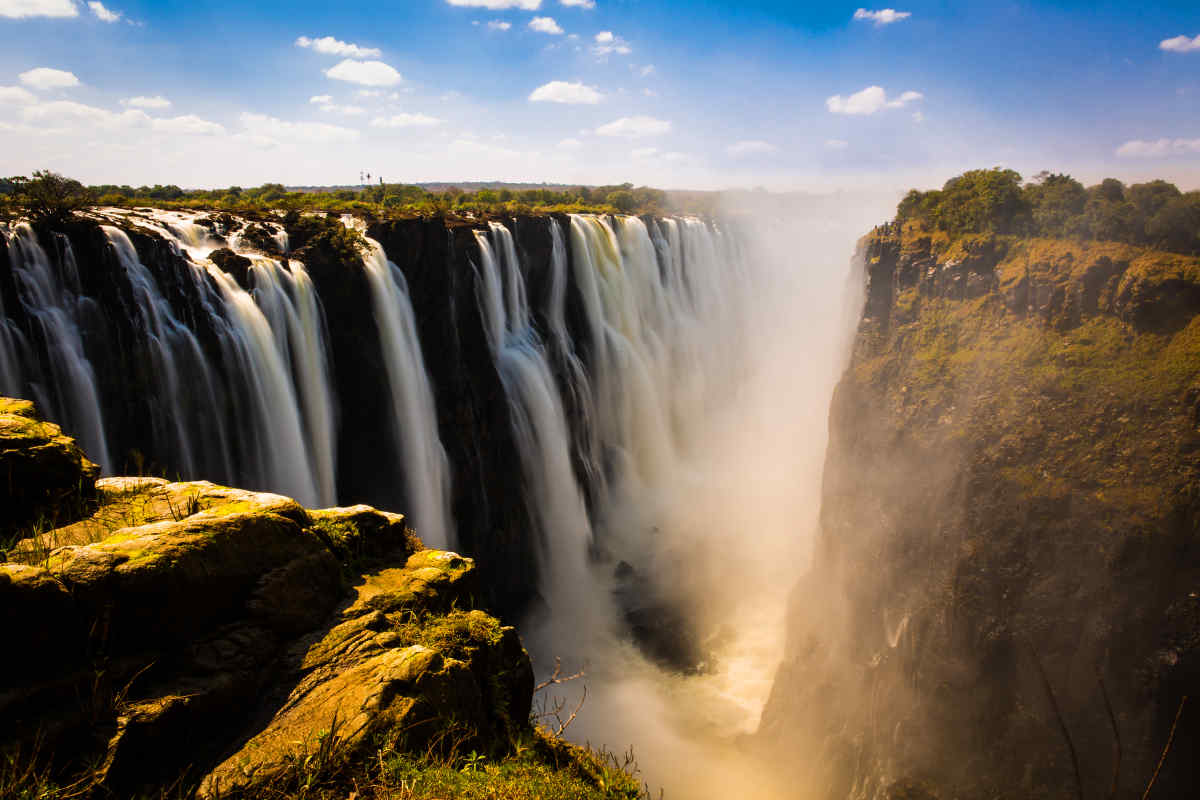
One of the most remarkable attractions of the waterfall is a small naturally formed pool referred to as “Devil’s Pool.” Here you can swim near the edge of the Zimbabwean side of the waterfall.
There are two national parks located in the vicinity of the waterfall called the Mosi-oa-Tunya National Park and the Victoria Falls National Park. These are relatively small, covering an area of just 66 square kilometers and 23 square kilometers. A much larger national park is located west of the waterfall and is called the Zambezi National Park. Thie park covers an area of 560 square kilometers and is famous for being the home of numerous wild animals.
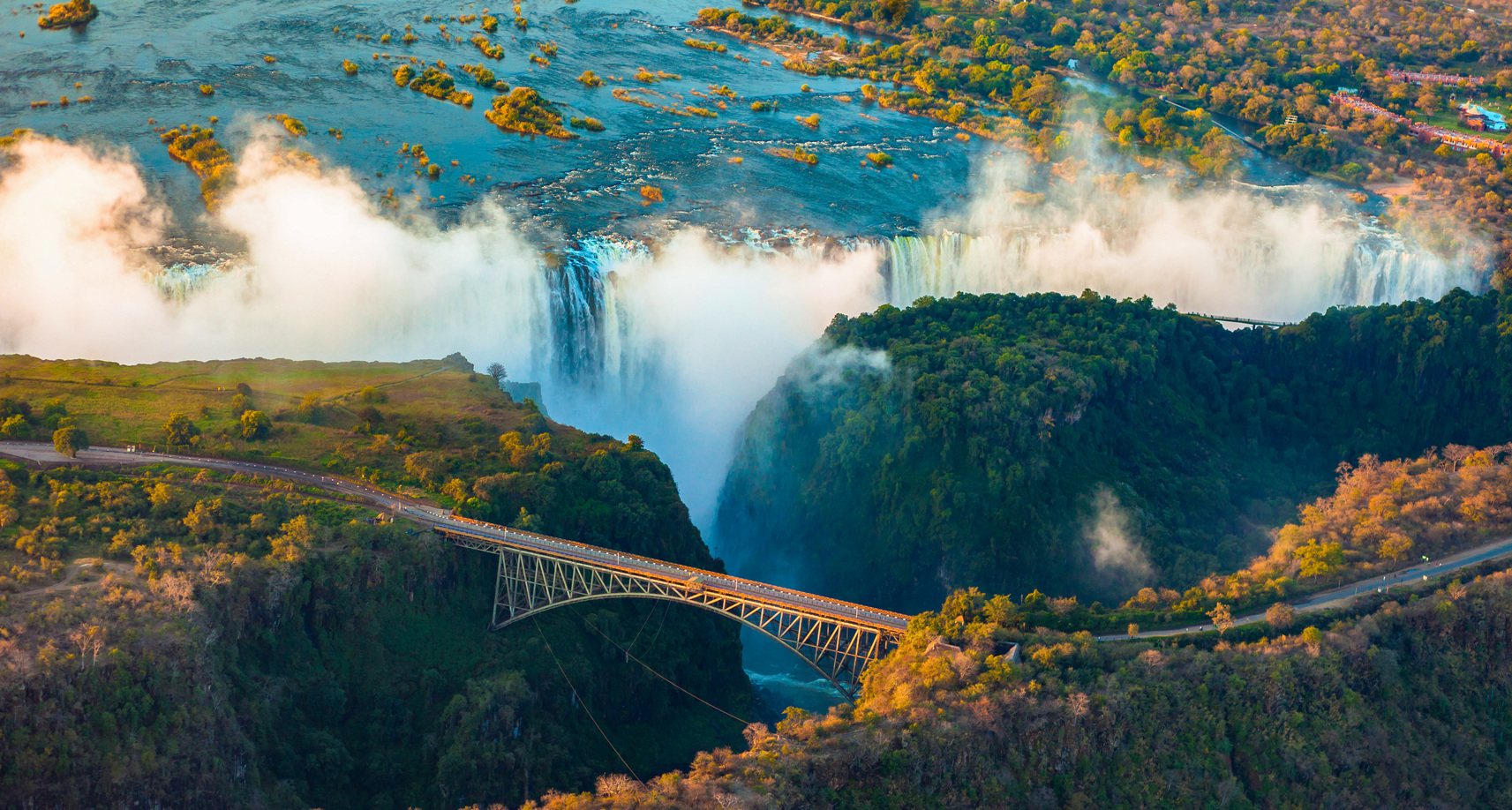
Victoria Falls has been a popular tourist attraction for multiple decades. Hundreds of thousands of tourists visit this amazing spectacle every year and the region is full of facilities to accommodate visitors.
One of the most fascinating facts about Victoria Falls is that its English name isn’t used locally. In the Sotho language that is spoken in the region, it’s referred to as the “Mosi-oa-Tunya” which translates to “The Smoke That Thunders.”
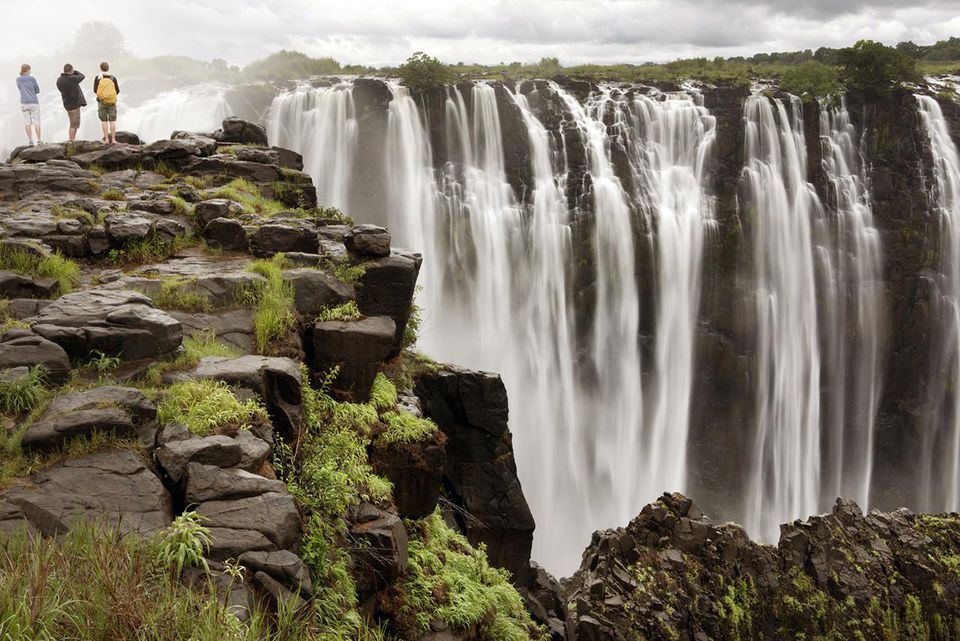
The flood season of the river happens between February and May. The peak of the waterfall’s flow rate happens in April and the average flow rate is 1088 cubic meters per second (38,430 cubic feet per second).
The waterfall is one of the numerous feats of nature that was named in honor of the British Queen. Some others include Lake Victoria in Africa and the Great Victorian Desert in Australia.
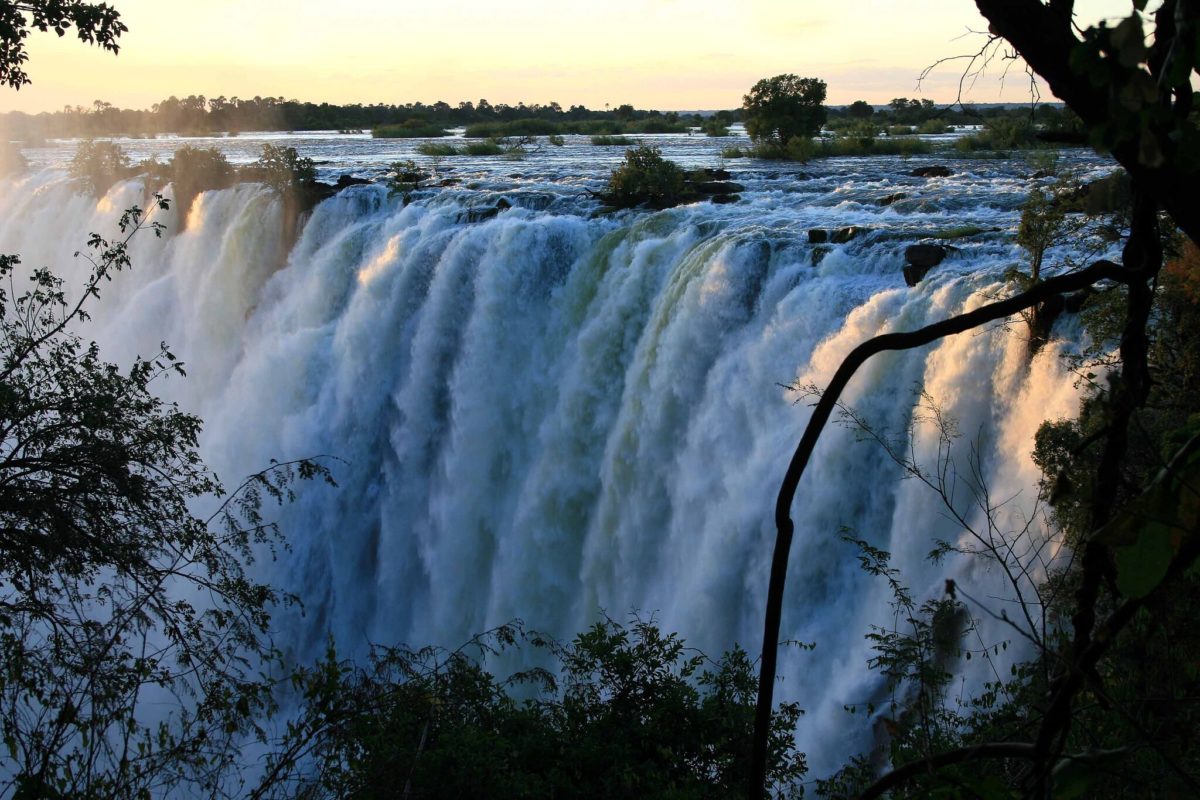
Swimming at Devil’s Pool is only possible between September and December when the flow rate is minimal. A rock barrier separates adventurous swimmers from tumbling off the edge of the huge waterfall.
The island in the middle was named in honor of David Livingstone, the Scottish explorer who was the first European to see this force of nature. It’s from this island that he first laid eyes upon the waterfall.
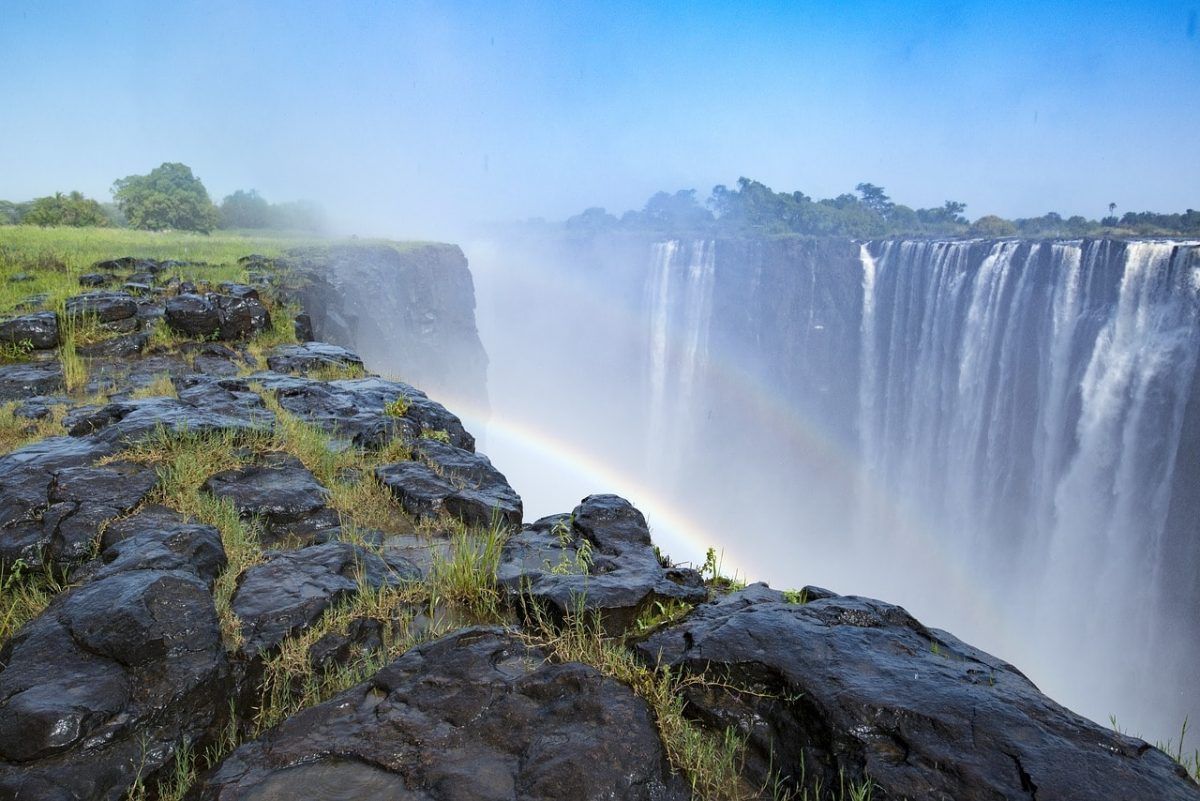
The waterfall was designated as a UNESCO World Heritage site in 1989. The organization describes them as being “among the most spectacular waterfalls in the world.”
At its peak, the spray of the waterfall can rise to 400 meters (1,300 feet) in the air and sometimes even more. This magnificent natural miracle can be seen from a distance of 50 kilometers (30 miles) away.
